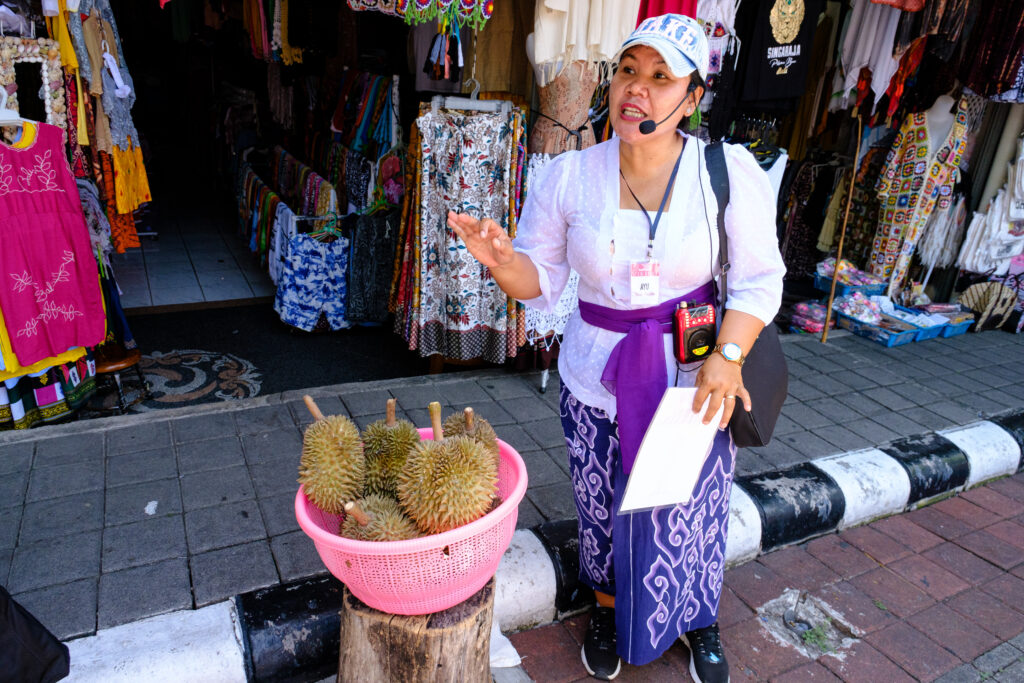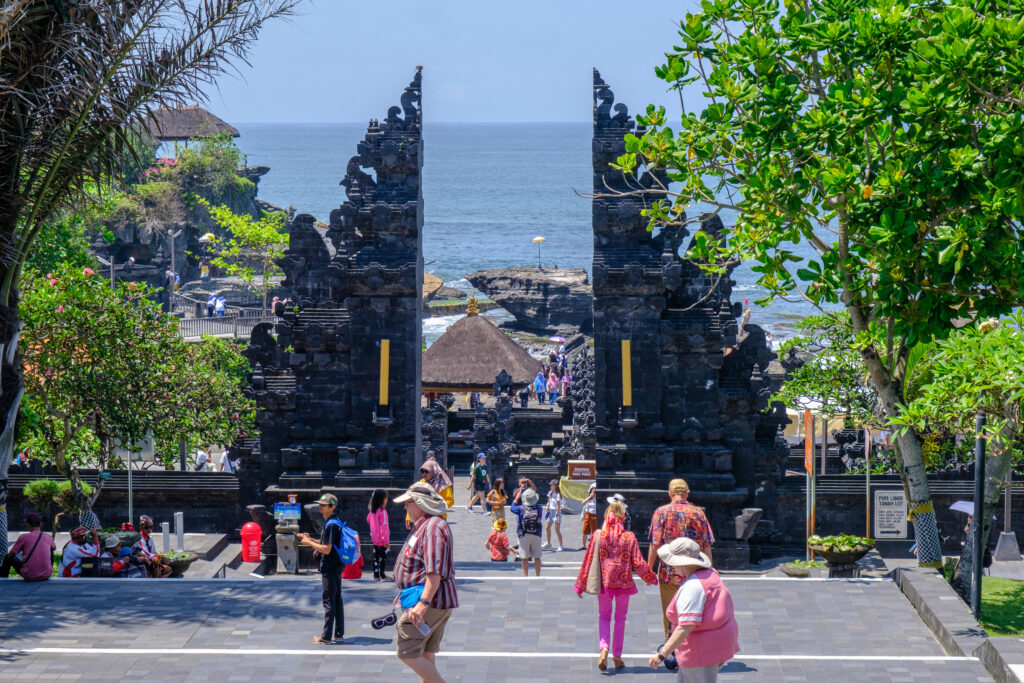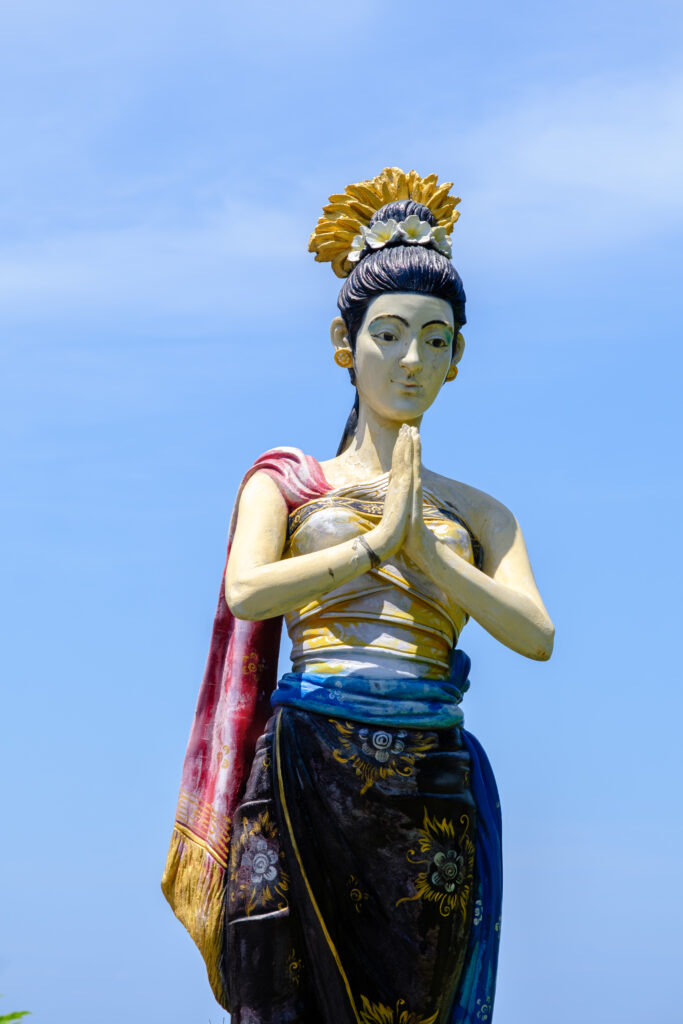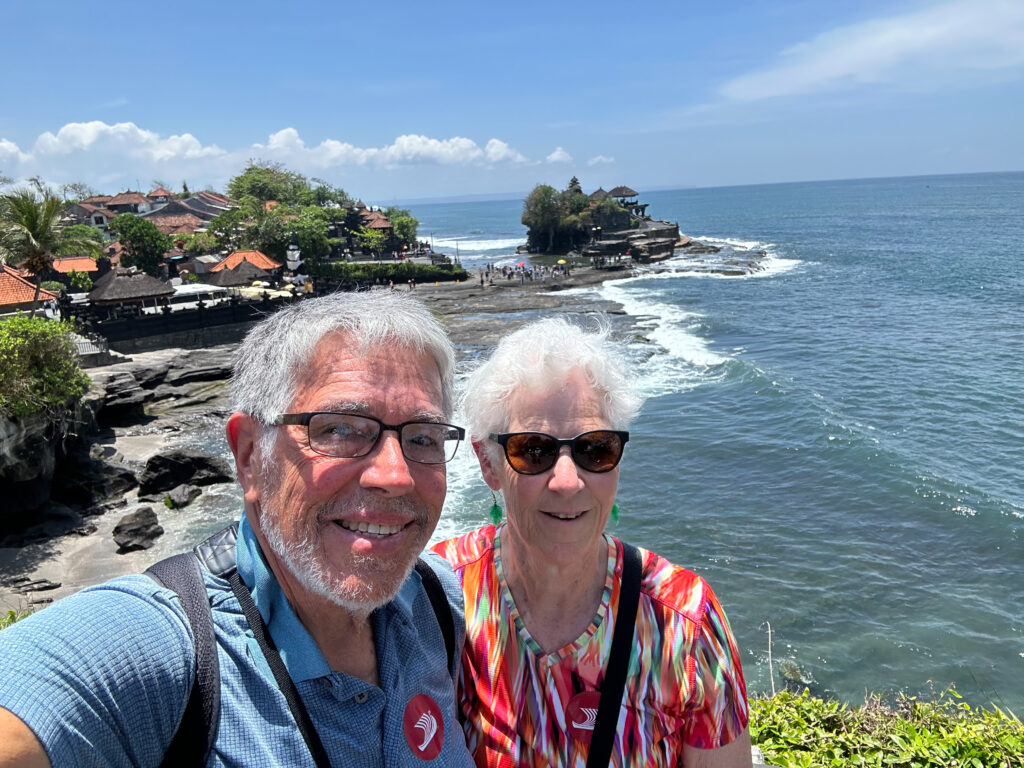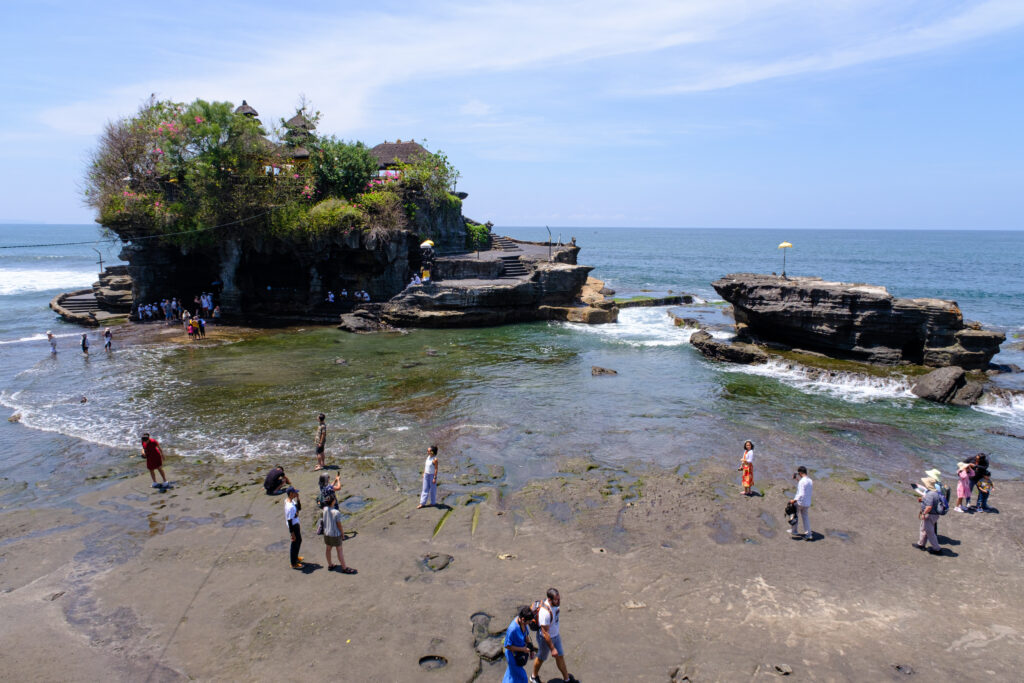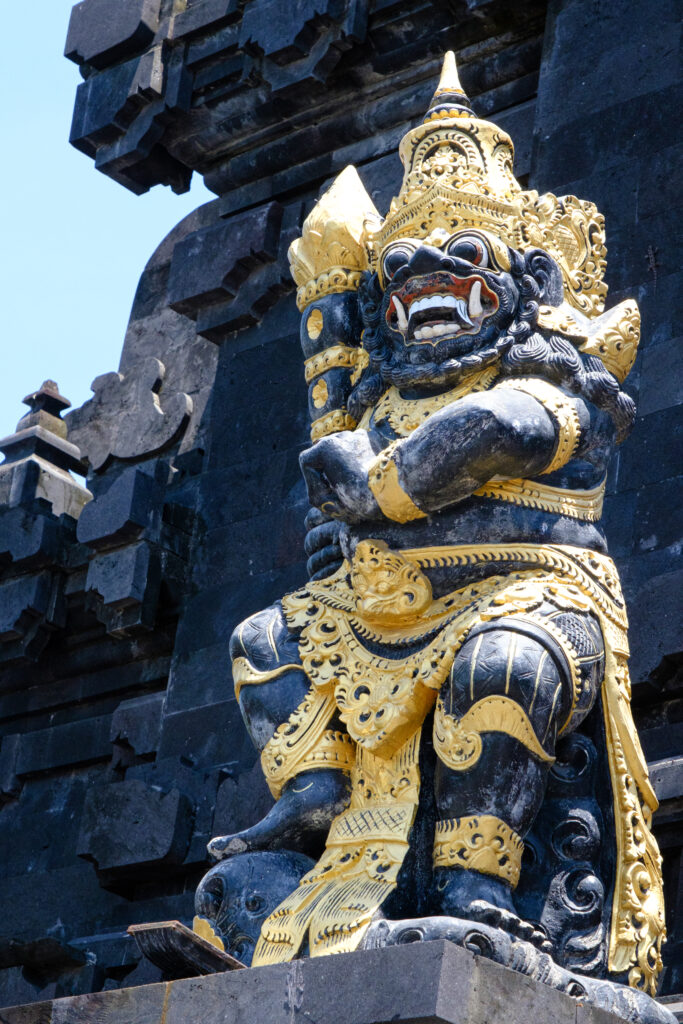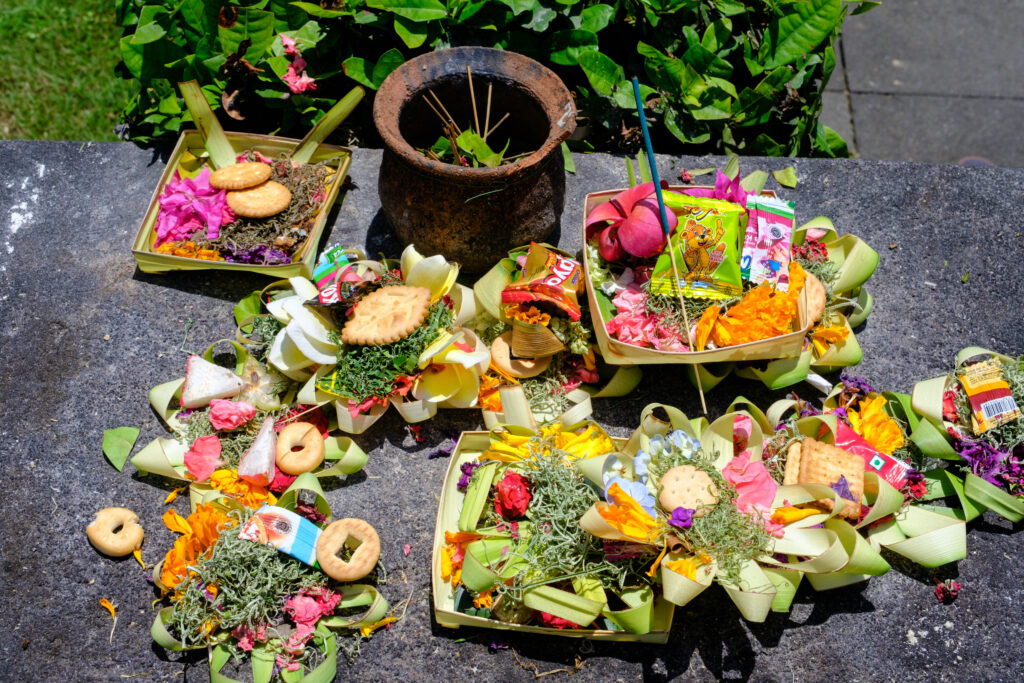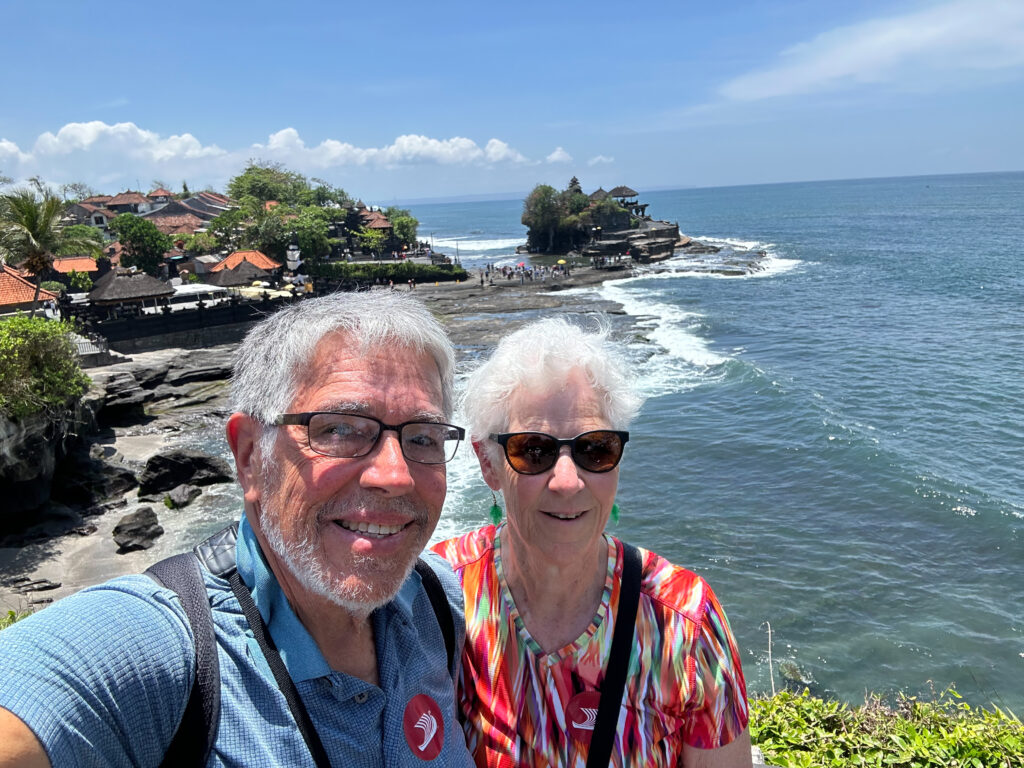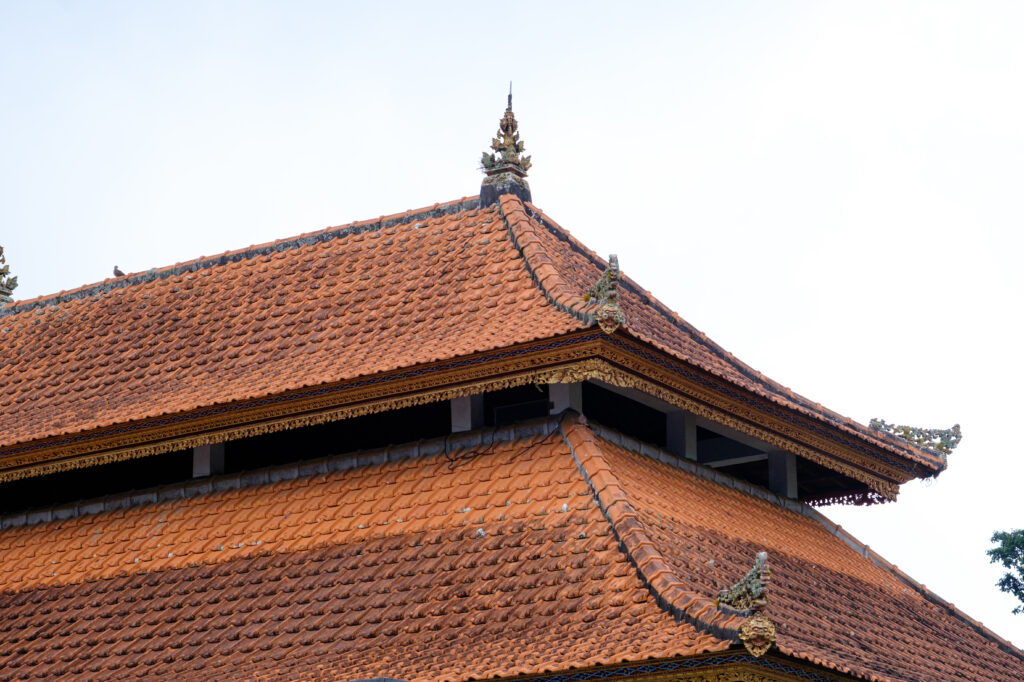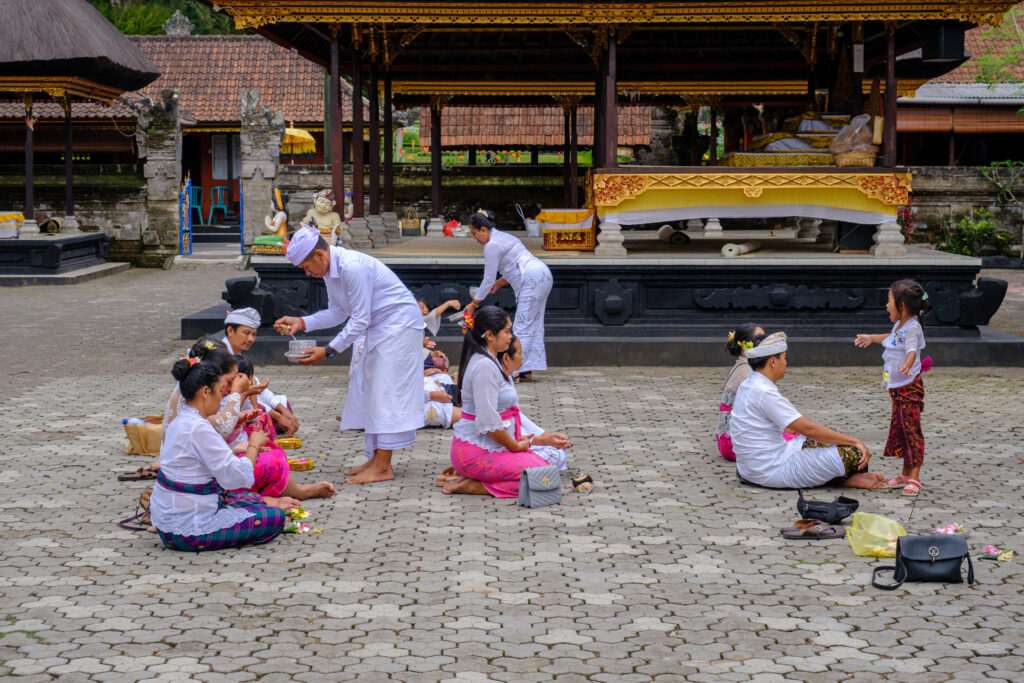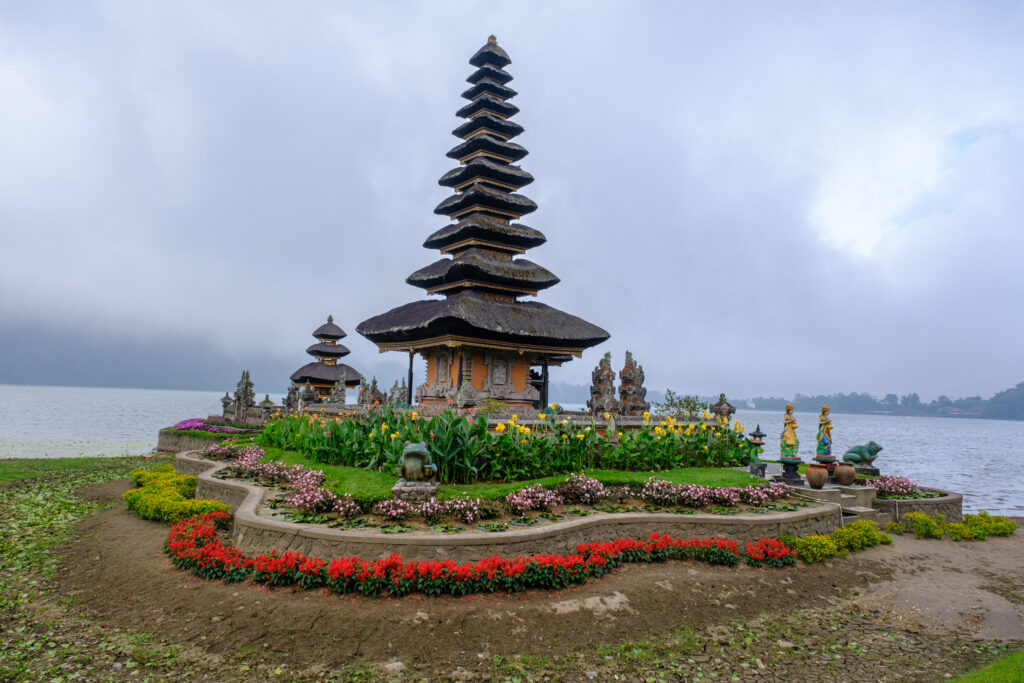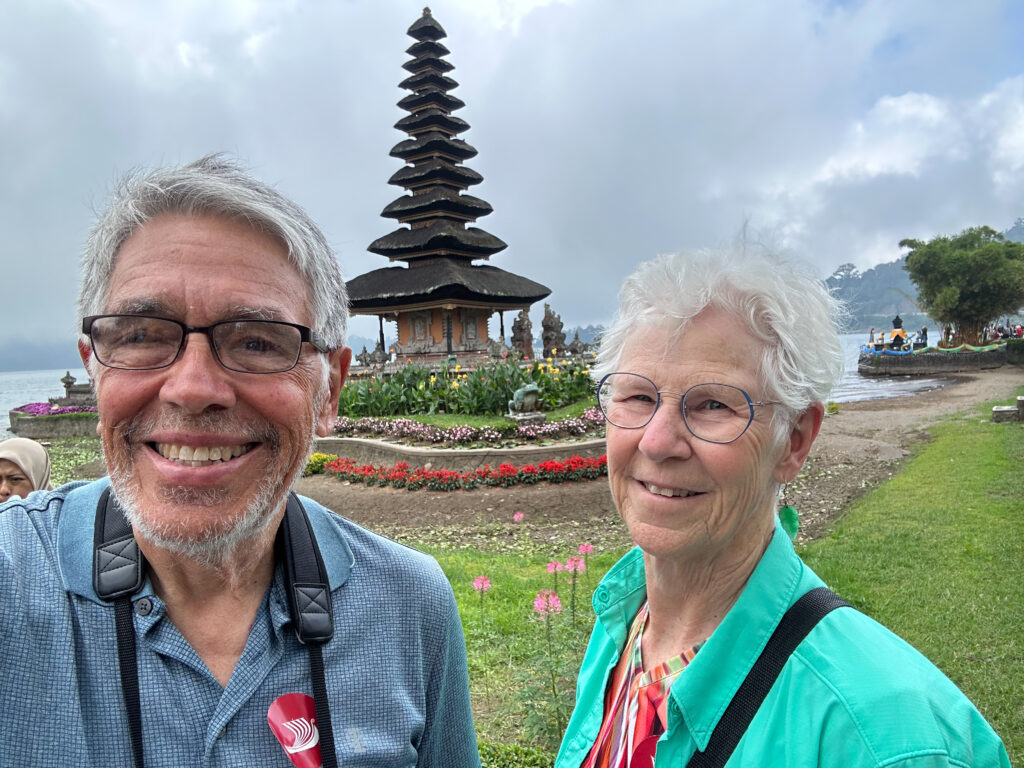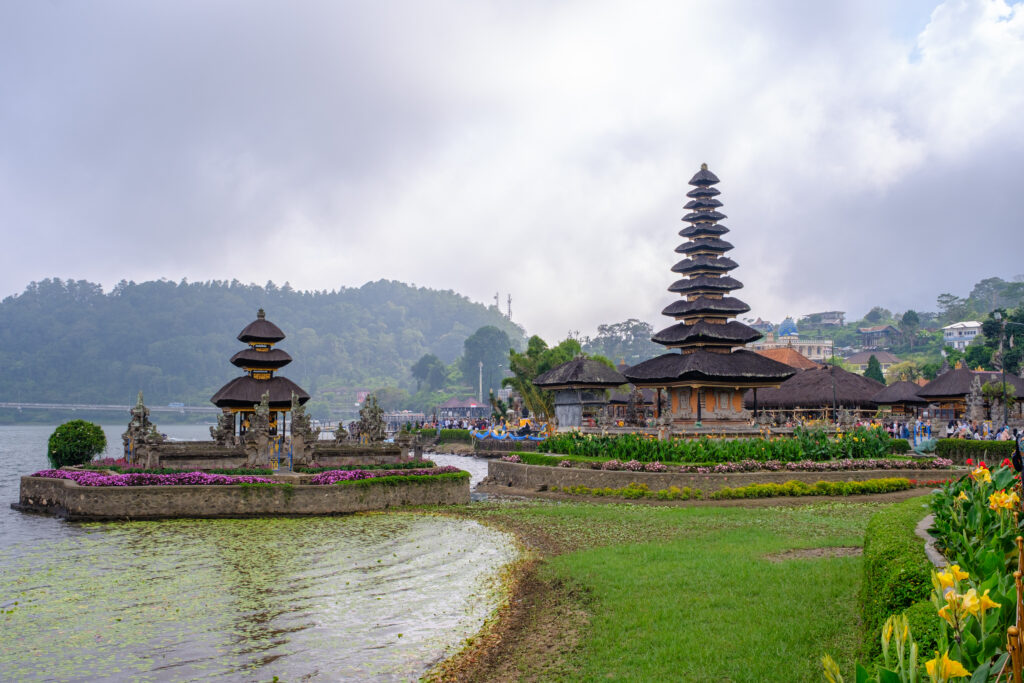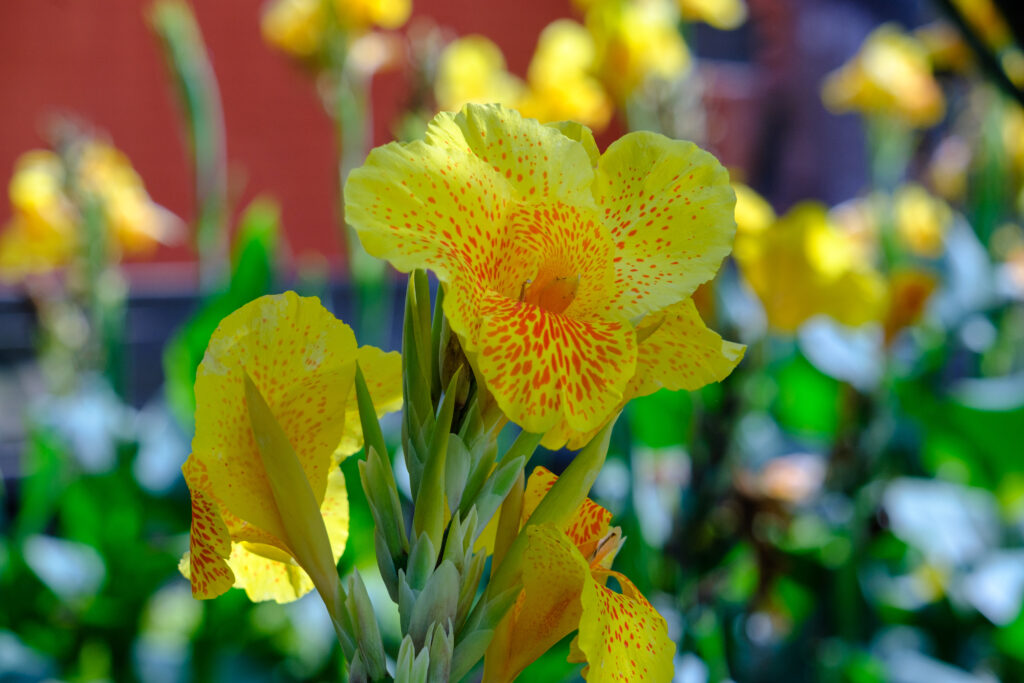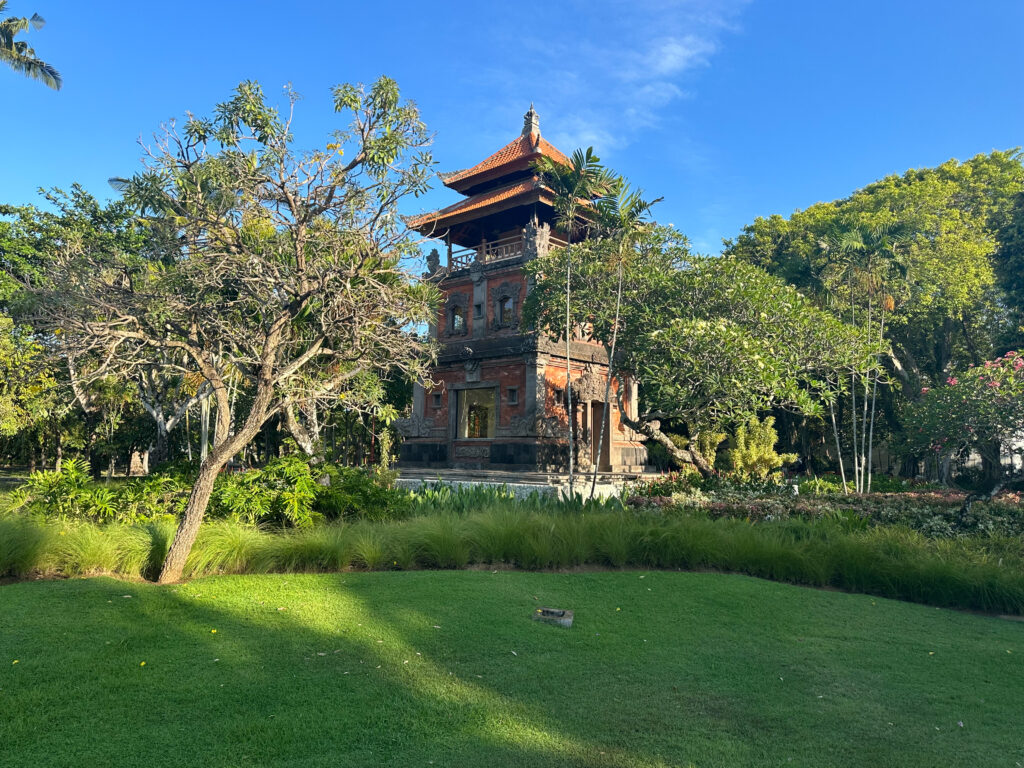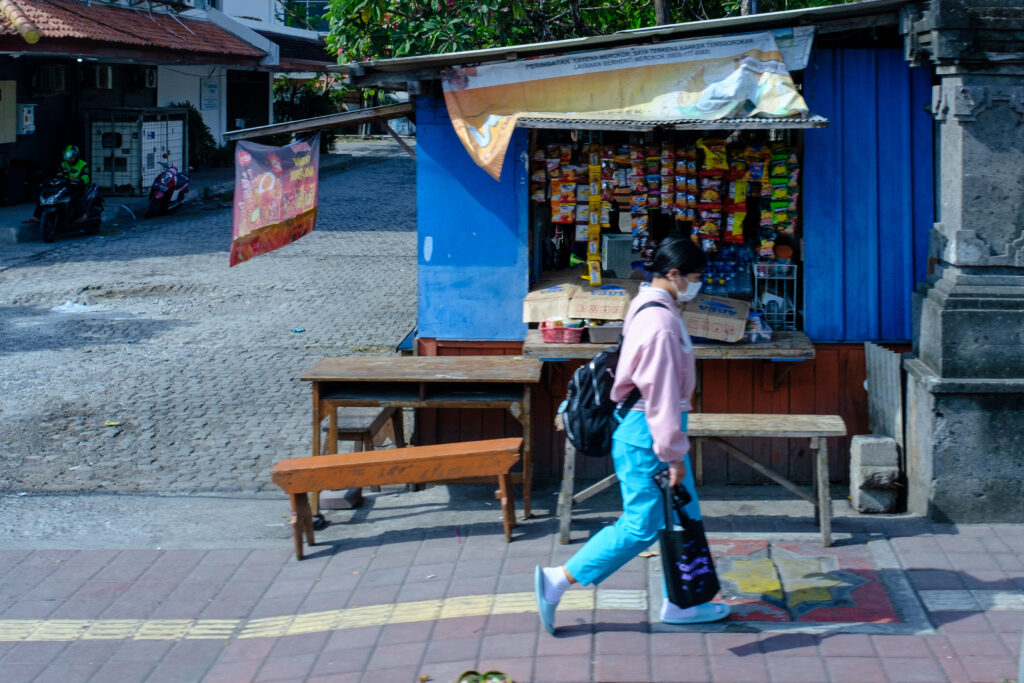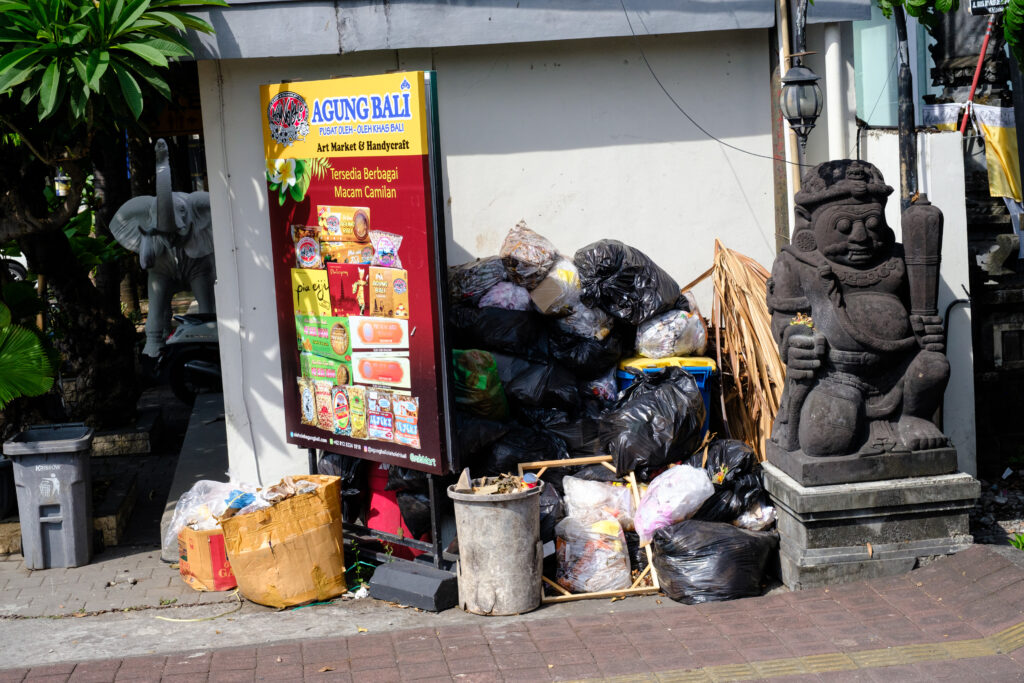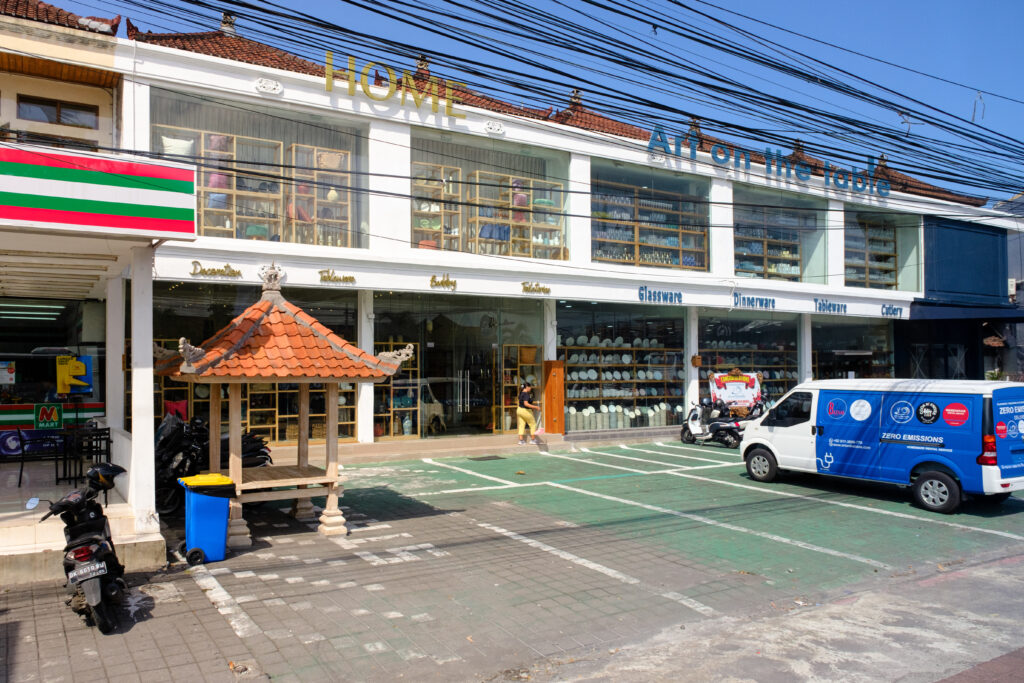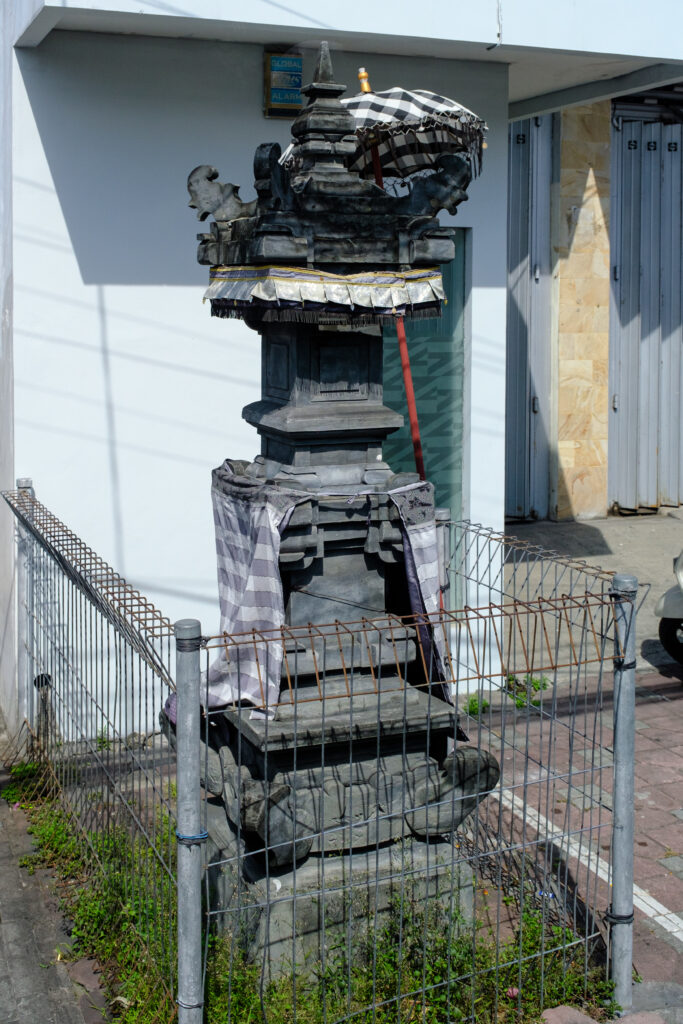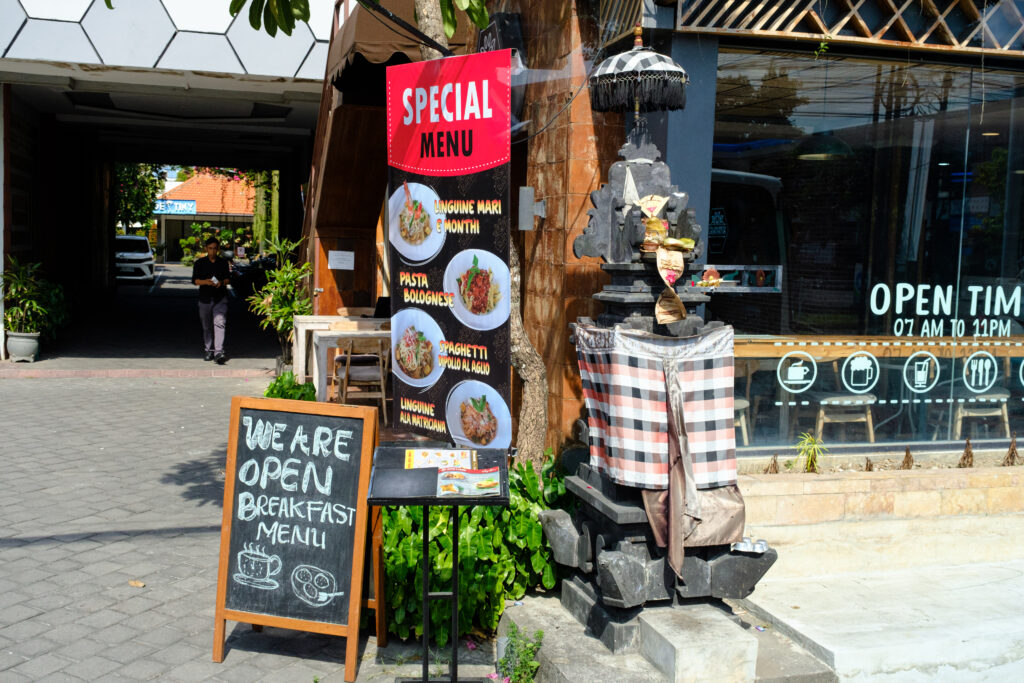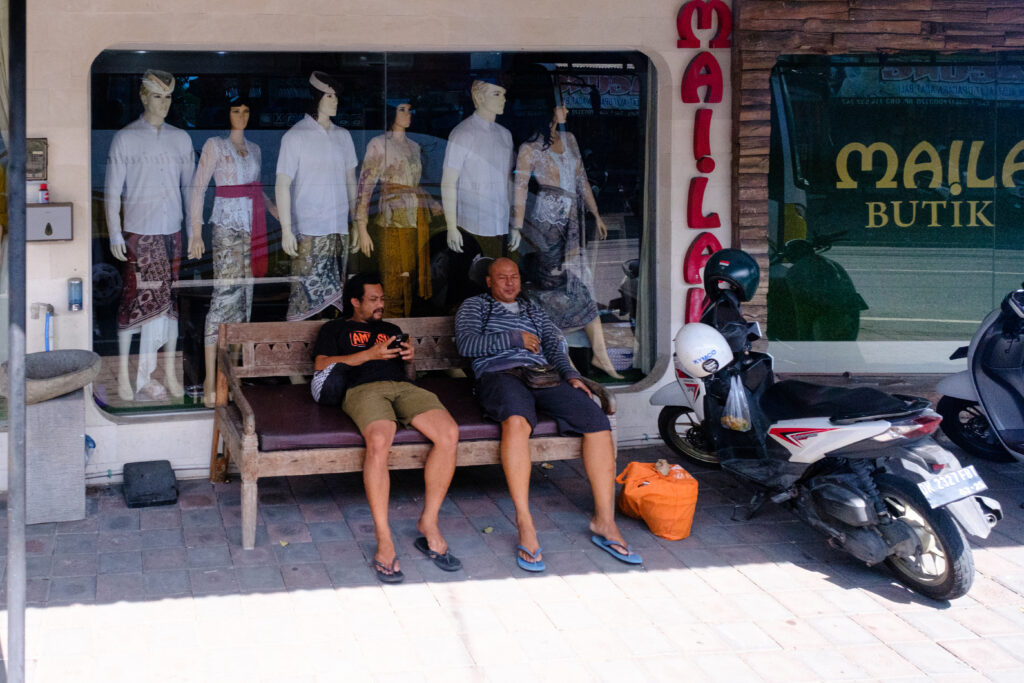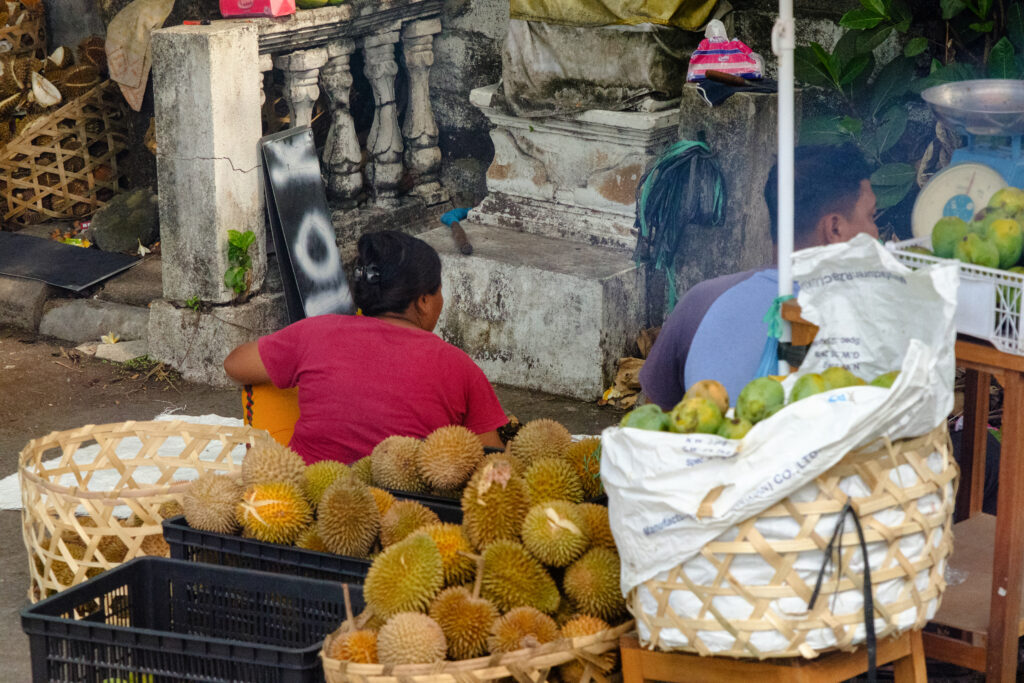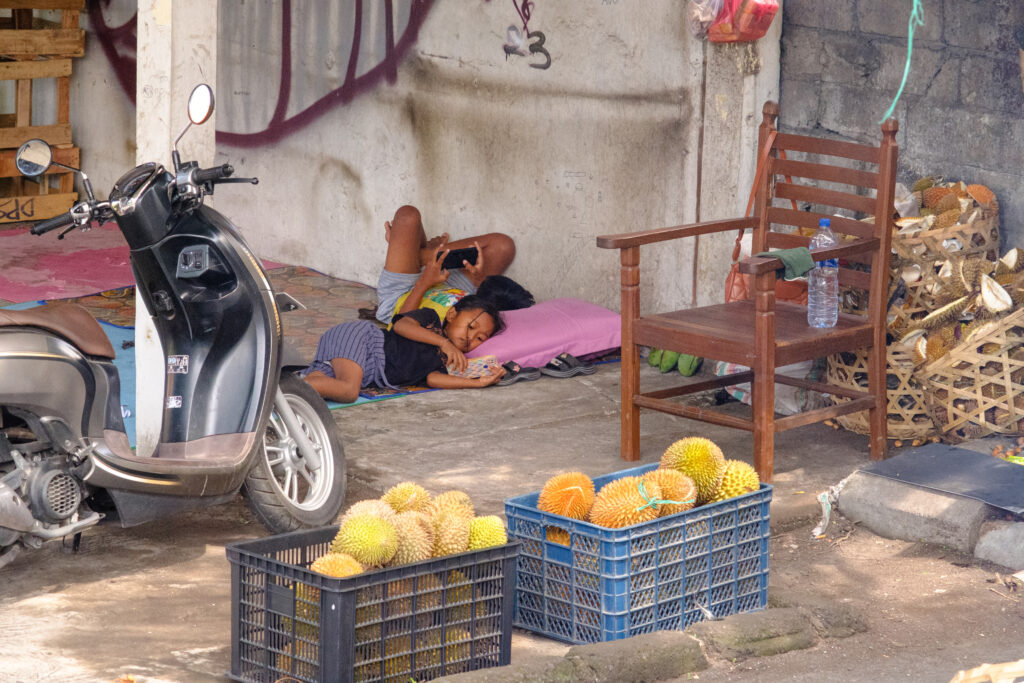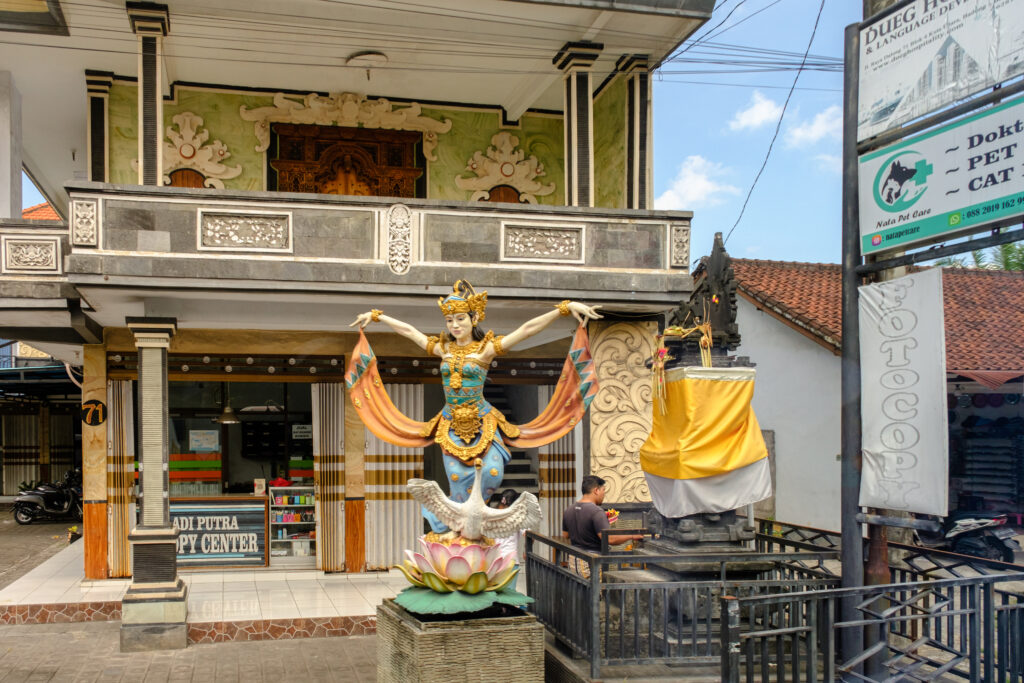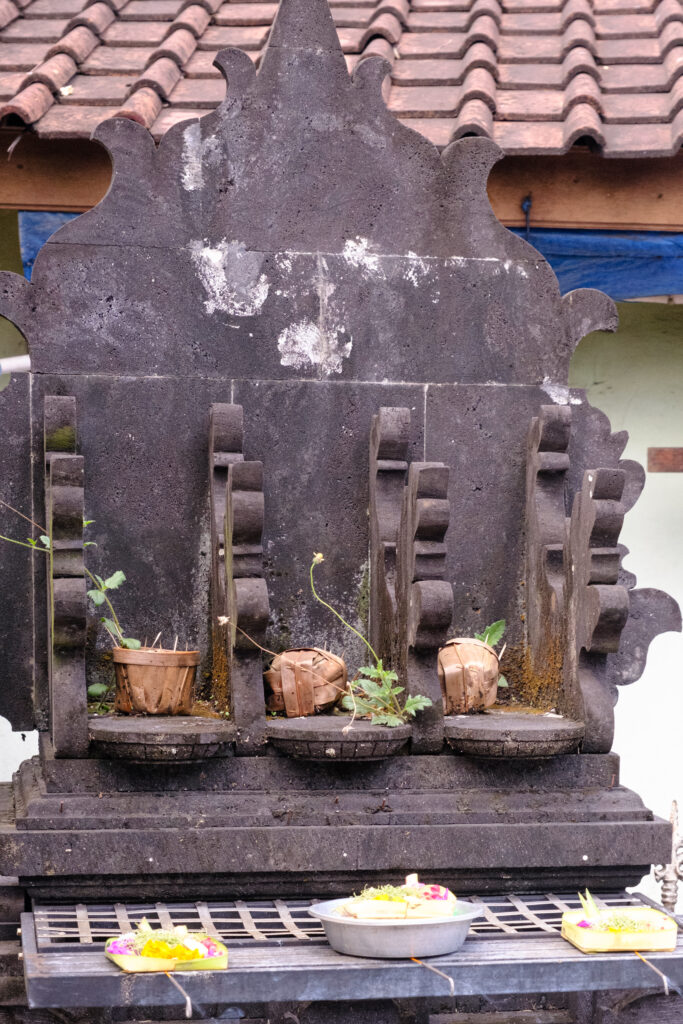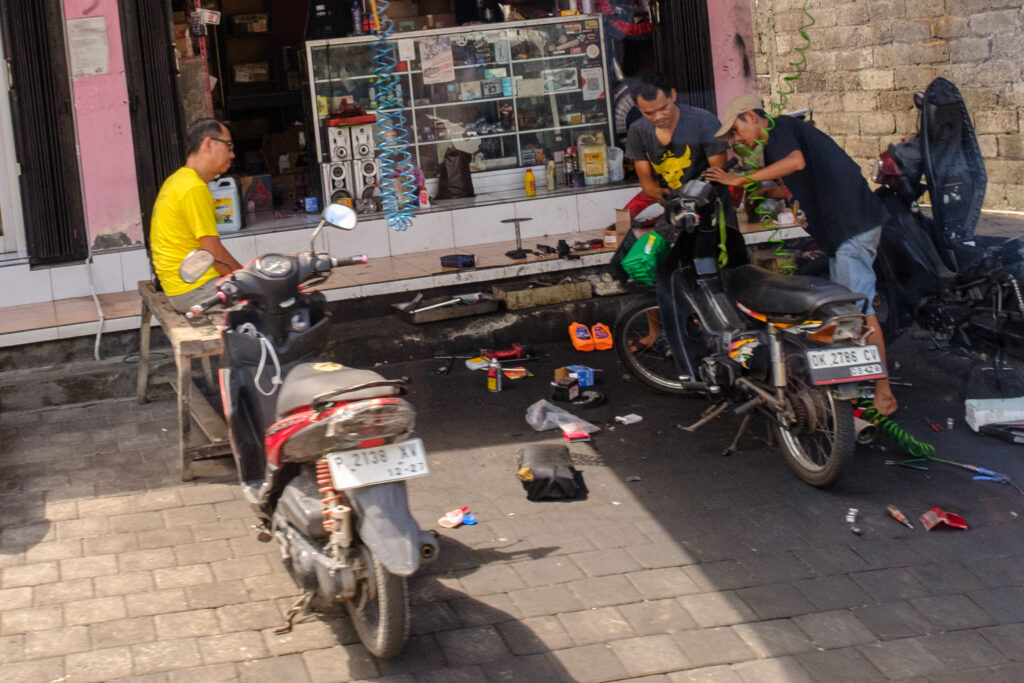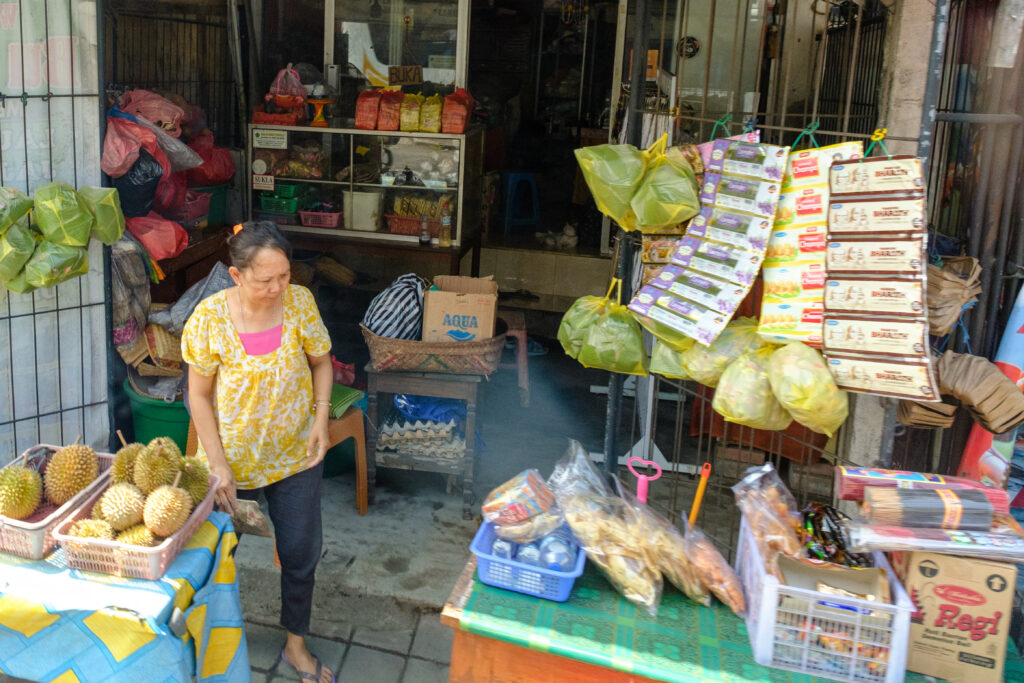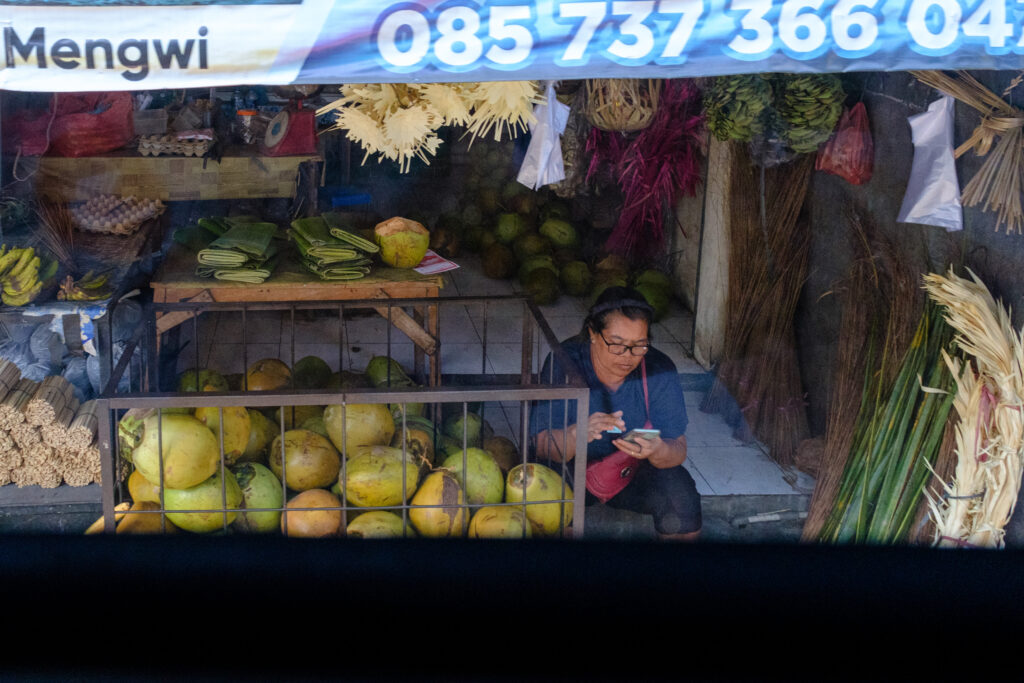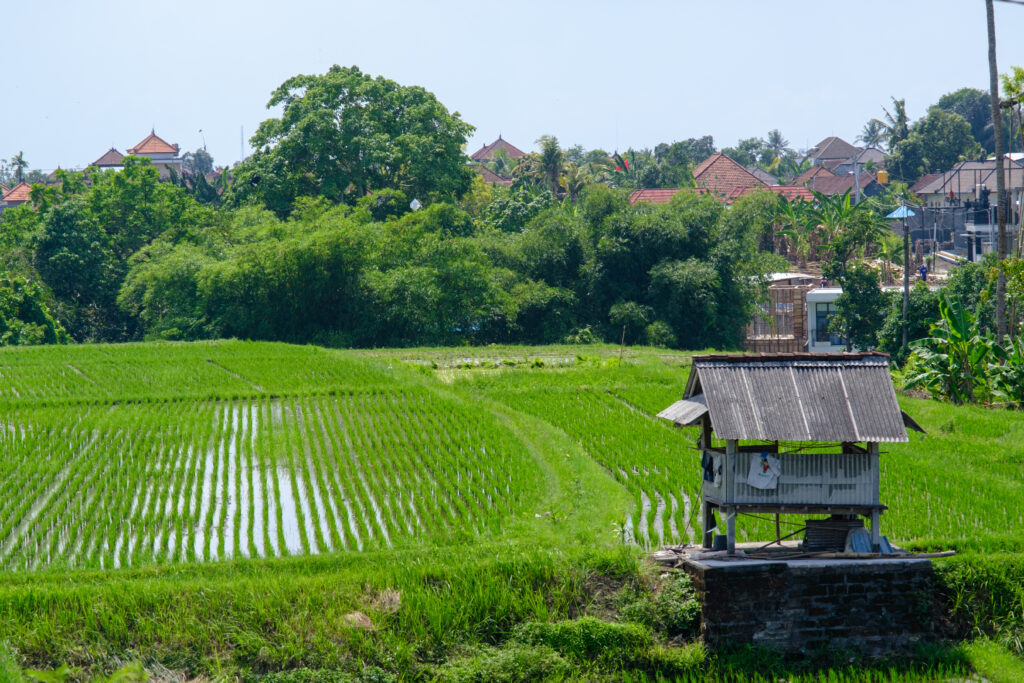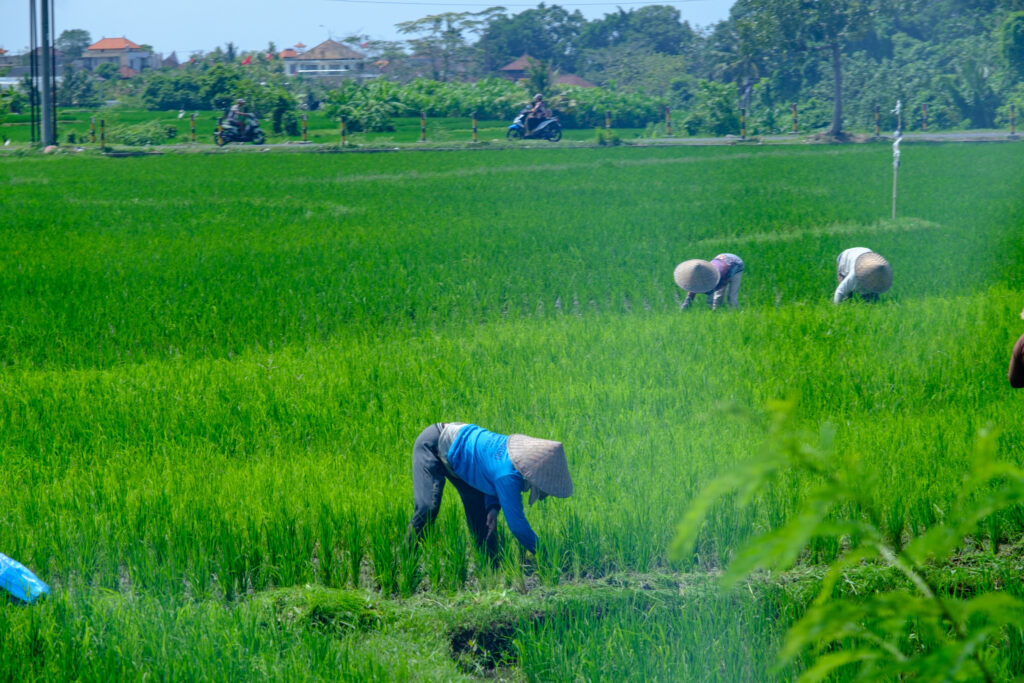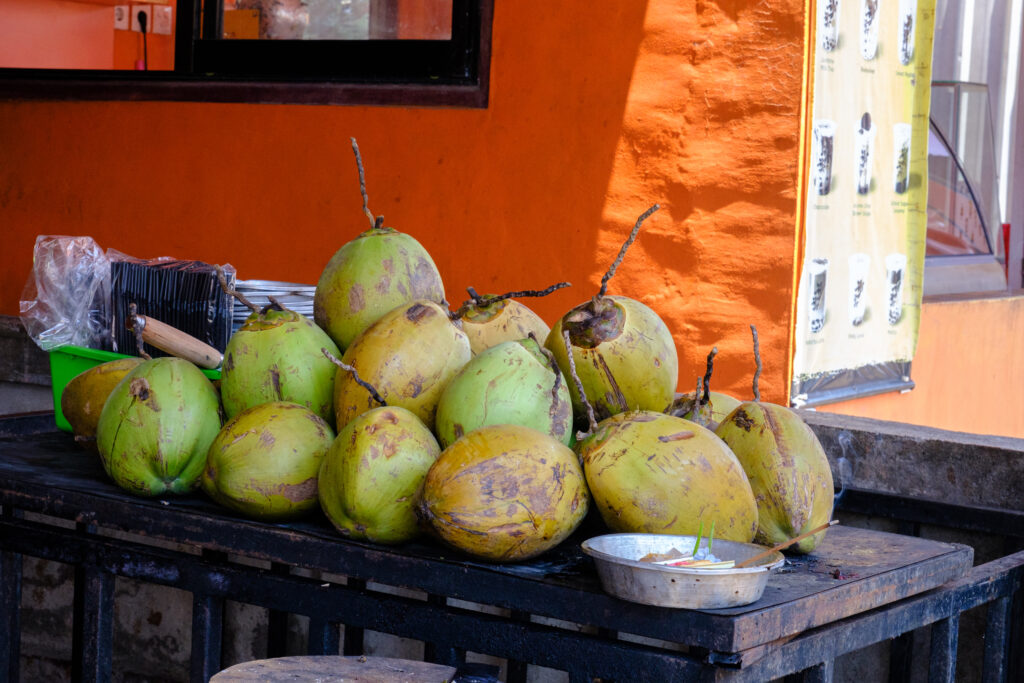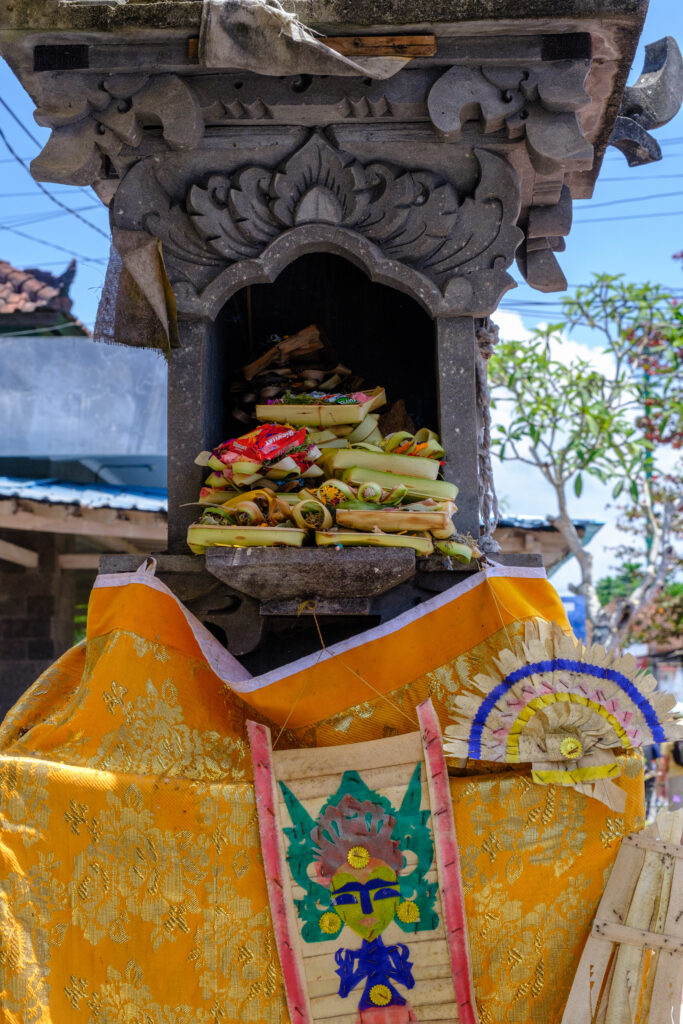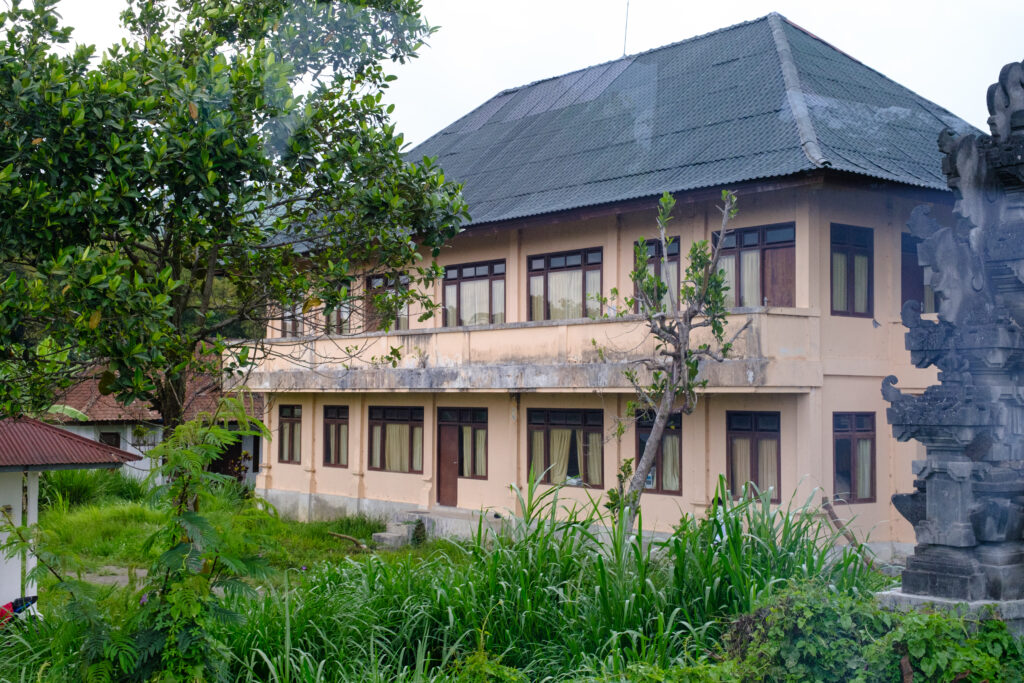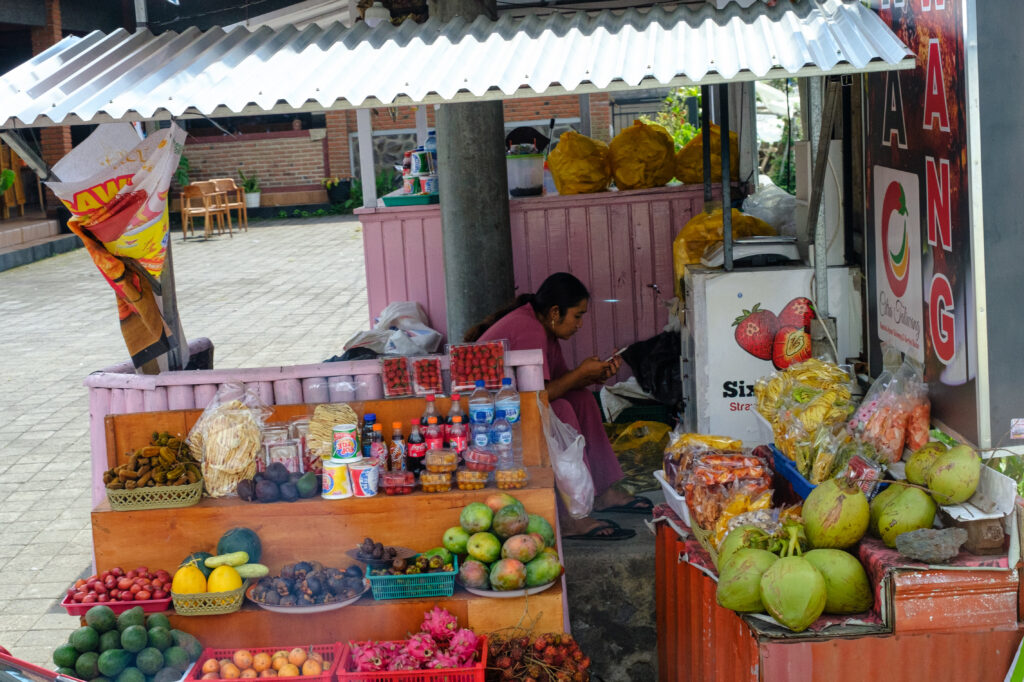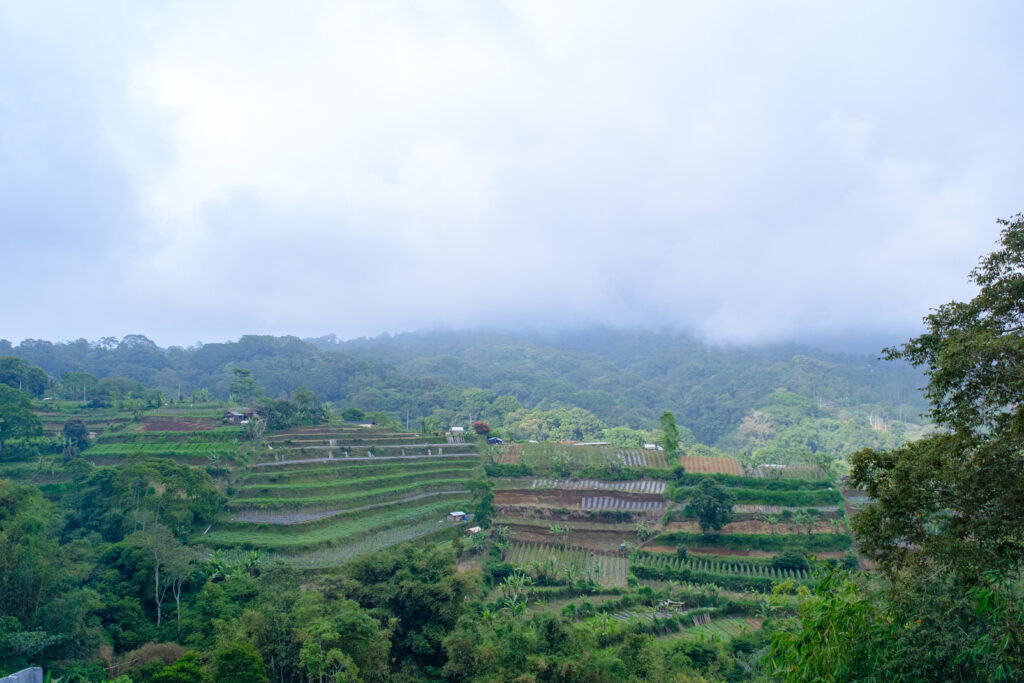Today’s objective was to visit two temples of historical significance. Doing so entailed a day on a tour bus – five busses in all carrying 20 guests each. That’s a lot of tourists but only a drop in the bucket compared to the total number of tourists visiting each site. This is Saturday and so the crowds were thick.
Doing so also entailed a lot of seat time – maybe 2 hours to the first temple, another 2 hours to the second and close to 3 hours to return. Add in lunch for 45 minutes and temple visits for an hour each. We left at 9 AM and got back close to 6 PM. We had a police escort, siren blaring, on the return trip. The escort turned a two-lane 35 mph road into a three-lane 45 mph racecourse, with motor scooters on either side adding to the confusion. A nail biter but we made it OK. A long first day on the tourist trail.
We ate breakfast at the hotel and by chance sat with another Viking couple who, small world, used to live in Melrose and now live in Windham. We compared travel notes and we’ve been to the same places, right down to Nepal and Bhutan.
The first temple, Tanah Lot, is said to have been built in the 15th century. There was a great spiritual Hindu saint, Dang Hyang Dwi Jendra. In his old age, was led to the site of Tanah Lot by a holy light. His teachings were challenged by another spiritual leader. Dang Hyang Dwi Jendra proved his legitimacy by using his meditation to move the huge rock into the sea. Everyone was convinced and they built a temple on the island in his honor.
Some argue that natural erosion caused the rock to be separated from the mainland. In 1980 the government of Japan provided funds to restore roughly 30% of the rock that had succumbed to erosion. It’s a major tourist attraction.
Among the many tourists there today were a number of Muslim students – middle school and high school, I’d guess. Ayu said that they are from Java on a field trip and would return home tomorrow.
We next stopped at the Handara Golf and Resort Club for a standard-issue tour bus buffet luncheon. The meal was OK for what it was. The golf course looked nice but I had to wonder if they had enough golfing business to survive. The tour bus trade may be needed to water the greens.
The Taman Ayun temple was nearby. Built in the 17th century as a royal temple during the Mengwi Empire, its name translates to “beautiful garden.” Indeed, it has lots of nice gardens. And a lot of tourists. But it is an active Hindu temple nonetheless.
The golf resort and Taman Ayun temple are located at a higher elevation – 3,000 feet or so I’d guess. The temperature at Taman Ayun was maybe 70 compared to 85 or higher at Tanah Lot.
For me, the real value of this trip was to watch the Bali landscape pass by our bus windows. I hesitate to call Bali a third-world locale, but it reminded us of Nepal. It is dominated by two main features: lots of small retail businesses and shops and a huge number of temples of all sizes and shapes. In the highlands, fruit and vegetable farming is a big deal. Since Hindu Bali largely follows a vegetarian diet, there’s a steady market for veggies.
Ayu tells us that there is no social network for unemployed persons. There are no governmental unemployment programs, so it’s work or starve, take your pick. Hence the shops. Take a look at the pictures to see what I mean.
Ayu also tells us that virtually every Hindu home has a temple on its premises. The family places daily offerings on the temple. Ayu said she hadn’t placed her offering yet but would do so when she got home.
There are also temples established at several different levels: neighborhood, village, region, etc. Bali is clearly a devout community of Hindu practitioners. Bali is the only majority Hindu island in all of Indonesia. Upwards of 90% of Bali’s population is said Hindu; Muslims account for most of the rest.
Here are pictures I took out the bus windows to give you an idea of what Bali is like.
Sorry, but due to a slow Internet tonight and the late hour, I’m able to post only a few. I’ll get the others up later.

